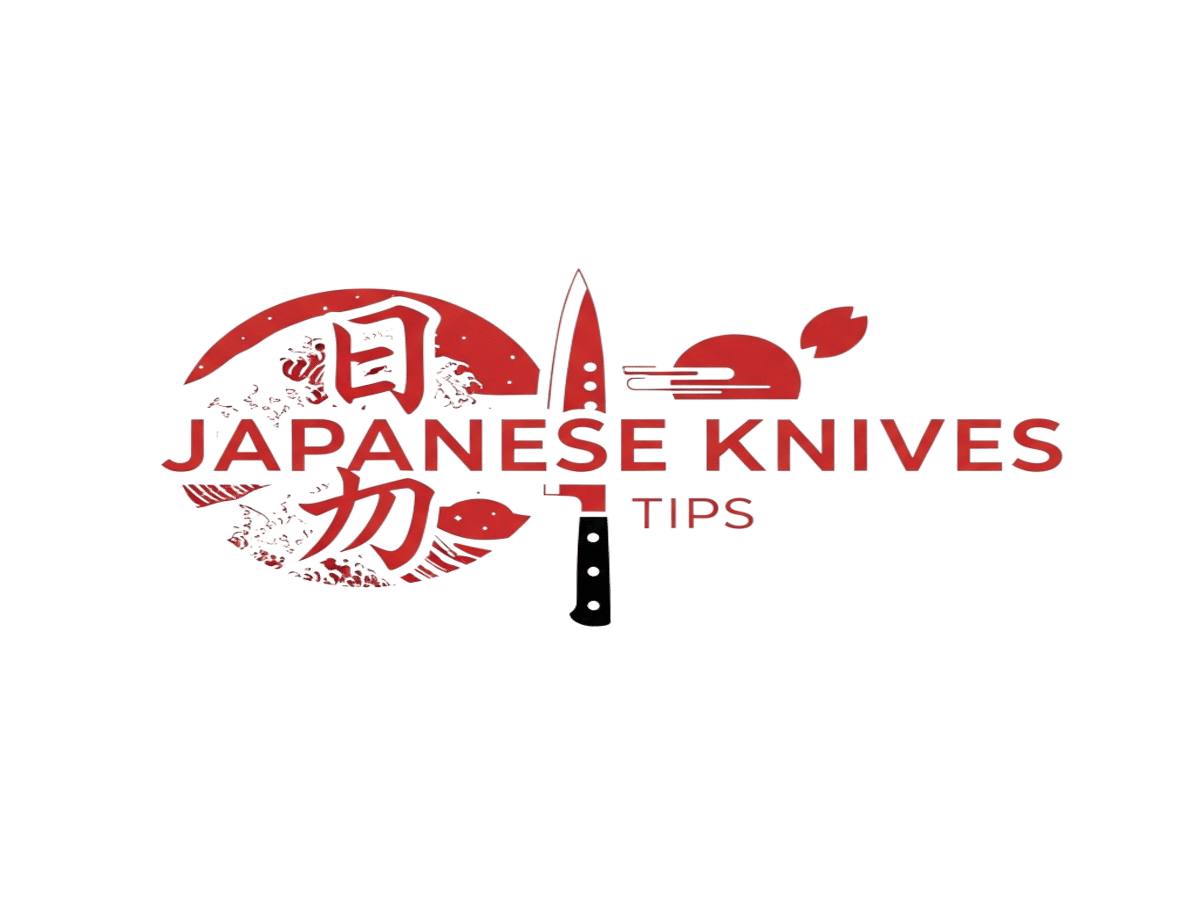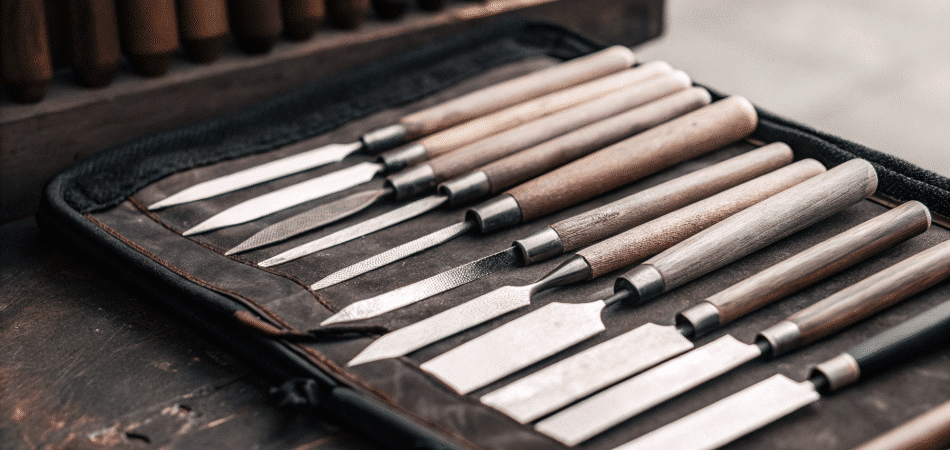Japanese wood carving knives are known for their sharpness and quality. If you’re into woodworking, these tools bring a level of precision and control that’s hard to beat. Many tools are manufactured by skilled craftsmen in Japan, ensuring high standards and attention to detail. They’re made with care using Japanese high carbon steel, which means they hold their edge well and last a long time. Whether you’re a beginner or someone who’s carved wood for years, having the right knife makes a big difference.
- Introduction to Japanese Wood Carving
- What Makes Japanese Wood Carving Tools Stand Out?
- Different Types of Japanese Wood Carving Knives
- Choosing the Right Knife for Your Woodworking
- How to Care for Your Japanese Wood Carving Knives
- Why Japanese Wood Carving Knives Are Worth It
- Using Japanese Wood Carving Knives for Various Projects
- Where to Find Japanese Wood Carving Knives
- Final Thoughts on Japanese Wood Carving Knives
Introduction to Japanese Wood Carving
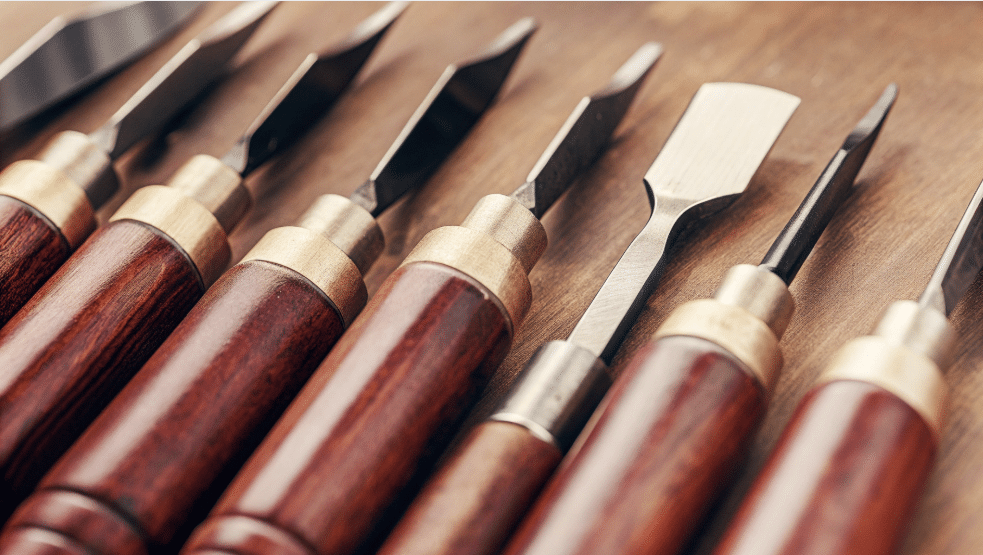
Japanese wood carving is more than just a craft. It’s a time-honored tradition. It blends artistry, skill, and precision. In Japan, woodworking has been elevated to an art form. Generations of craftsmen dedicate their lives to perfecting their techniques. They create pieces that are both beautiful and functional. At the heart of this tradition are the tools themselves. Carving knives and chisels crafted from japanese high carbon steel. Often hand forged. This ensures exceptional quality and durability.
A Japanese carving knife is essential. Anyone interested in woodworking needs one. You’ll use it for shaping intricate patterns. For marking lines for joinery. For whittling small details. The single-beveled blade design is a hallmark of many Japanese knives. It allows for unmatched control and sharpness. This makes it easier to carve clean, precise lines. The sharpness of the blade is crucial. It makes carving smoother and safer. It also lets you achieve the fine detail that Japanese wood carving is known for. Many of these knives are designed to be compact and easy to carry. They’re ideal for outdoor projects. Even camping trips where a reliable, versatile tool is a must.
Chisels are another cornerstone. They’re key to the Japanese wood carving toolkit. Available in a range of blade lengths and widths. Chisels are perfect for removing small amounts of wood. For creating mortises. For adding intricate details to your work. The quality of the blade matters. It’s often measured by its HRC rating. That’s the Rockwell Hardness Scale. Higher HRC means a harder, longer-lasting edge. It stays sharp through repeated use. Many Japanese chisels and knives boast an HRC of 60 or higher. This makes them a favorite among woodworkers. They value sharpness and durability.
Just starting out? Many stores and websites offer sets. They include a variety of carving knives. Chisels too. Even storage cases to keep your tools organized and protected. These sets are great. They let you explore different blade sizes and shapes. You’ll find the ideal tool for each project. Working on a large piece? Focusing on delicate details? Having the right size and length of blade makes all the difference.
Learning Japanese wood carving is a journey. It rewards patience and practice. There are plenty of resources available. Online and in-store. Tutorials and videos. Expert advice on sharpening and maintaining your tools. Invest in high-quality, hand forged tools. Take the time to master traditional techniques. You can continue the legacy of Japanese woodworking. Create pieces that showcase your own craftsmanship and creativity.
You’re a seasoned woodworker? Just beginning your journey? Japanese wood carving offers endless opportunities. You can learn. Create. Connect with a rich tradition. With the right tools, a bit of patience, and a willingness to practice, you can carve your own path. Enjoy the satisfaction of making something truly unique by hand.
What Makes Japanese Wood Carving Tools Stand Out?
These knives and chisels aren’t just any tools. They come from a long tradition of making woodworking gear that works perfectly for detailed carving and tough jobs alike. The steel used is strong but sharp, keeping its edge through many uses. Many of these tools are hand forged, so each one gets special attention during production. This means you get a blade that’s both tough and precise.
The handles are designed to fit comfortably in your hand, helping you work longer without getting tired. Plus, the size of the blade matters. You can find everything from small knives for fine details to larger ones for rough shaping. This variety lets you pick the perfect tool for the task.
Different Types of Japanese Wood Carving Knives
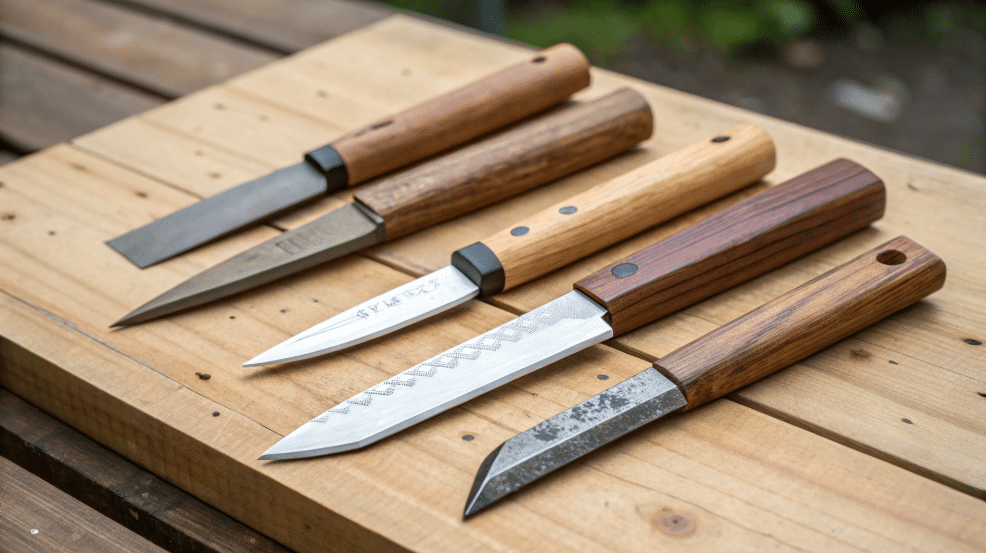
There are several types of carving knives that come from Japan, each made for different jobs. One popular style is the Kiridashi knife. It’s small, sharp, and great for marking wood or doing detailed carving. It’s also handy for outdoor projects like camping since it’s easy to carry.
Other knives are made for whittling or cutting mortises — those are the slots or holes you carve to fit pieces of wood together. The blade’s length and shape change depending on what you need it for. Some knives have single bevel edges, which means one side is flat and the other is angled. This design helps with making precise cuts.
If you want a set, many stores offer collections that include various sizes of knives and chisels. This can be a good way to get started or add to your tools without hunting for each piece separately.
Choosing the Right Knife for Your Woodworking
Picking the right knife depends on what kind of work you’re doing. Think about the wood type, how detailed your carving needs to be, and how you like to hold your tools. A sharp blade made from good steel will make cutting easier and safer.
Look for knives that are hand forged and use high carbon steel with a good hardness rating (HRC). This means the blade is tough but not brittle. Also, consider the knife’s size and weight — it should feel balanced in your hand.
If you’re buying online, check the product details carefully. Some stores include extra info about the blade length, handle material, and sharpening methods. Reading reviews or asking other woodworkers can help you avoid tools that don’t perform well.
How to Care for Your Japanese Wood Carving Knives
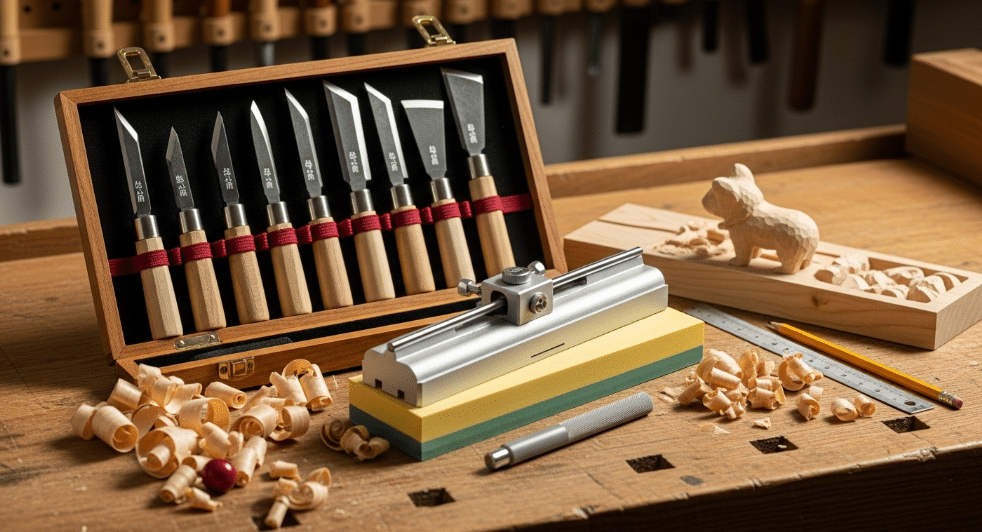
Keeping your knives sharp and clean will make them last longer. Regular sharpening is key — a dull blade makes carving harder and less safe. Use a sharpening stone or a honing guide to keep the edge even. Some people prefer to learn sharpening techniques themselves, while others send their tools to professionals.
After use, wipe your knives clean and dry them well to avoid rust. Store them in a dry place, ideally in a case or roll designed for knives. This protects the blade and keeps it ready for your next project.
Why Japanese Wood Carving Knives Are Worth It
These knives might cost a bit more than basic tools, but the quality shows. They hold their edge longer, cut cleaner, and feel better in your hand. Whether you’re carving indoors or working on outdoor projects, these tools can handle the job.
Many woodworkers find that investing in a good Japanese knife pays off with better results and less frustration. Plus, they last for years when cared for properly. It’s like having a reliable partner for your woodworking tasks.
Using Japanese Wood Carving Knives for Various Projects
You can use these knives for all kinds of woodworking projects. From making furniture to crafting small wooden gifts, they help you get clean cuts and detailed shapes. They’re also great for camping or outdoor work where you might need a sharp, dependable knife.
Some people use these knives for bonsai tree maintenance or other delicate tasks that require precision. The sharpness and control you get from a Japanese carving knife make tricky cuts easier.
Where to Find Japanese Wood Carving Knives
If you want to buy Japanese wood carving knives, look for stores that specialize in woodworking tools or Japanese products. Many offer sets that include different sizes and types of knives and chisels. It’s a good idea to check if the store provides details about the blade length, handle materials, and steel type.
Online stores often have customer reviews that can help you decide. Some shops also offer sharpening guides or accessories to keep your tools in top shape.
Final Thoughts on Japanese Wood Carving Knives
Having the right knife changes how you work with wood. Japanese wood carving knives bring sharpness, durability, and comfort to your projects. Whether you’re marking, carving, or whittling, these tools make the job easier and more enjoyable.
Taking care of your knives by sharpening and storing them properly keeps them ready for use. If you want tools that last and perform well, Japanese knives are a solid choice.
Give them a try, and you’ll see how much better your woodworking can be with the right tools in hand.
FAQ
How do I know which Japanese wood carving knife is right for me?
Think about what kind of carving you want to do. If you need fine details, a smaller knife like a Kiridashi works well. For bigger cuts or shaping, go for a larger blade. Also, consider how the knife feels in your hand—comfort matters when you work for a while.
How often should I sharpen my carving knives?
It depends on how much you use them. If you carve often, sharpening every few uses keeps the blade sharp and safe. If you’re just starting or carving less, sharpen when you notice the blade isn’t cutting as cleanly. Using a sharpening stone or honing guide helps keep the edge right.
Can I use Japanese wood carving knives outdoors or while camping?
Yes! Many Japanese carving knives are great for outdoor use because they’re sharp, sturdy, and easy to carry. Just remember to clean and dry them after use to avoid rust, especially if you’re out in wet or humid conditions.
